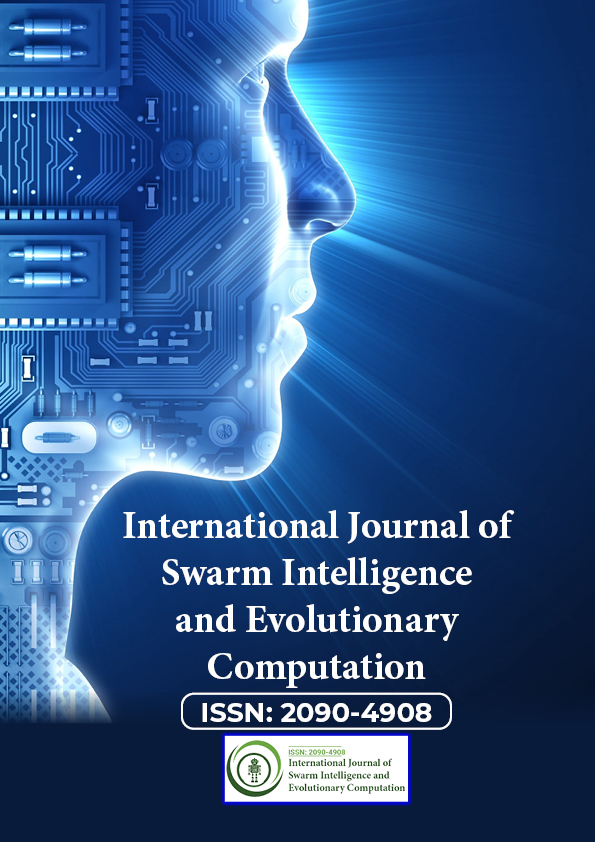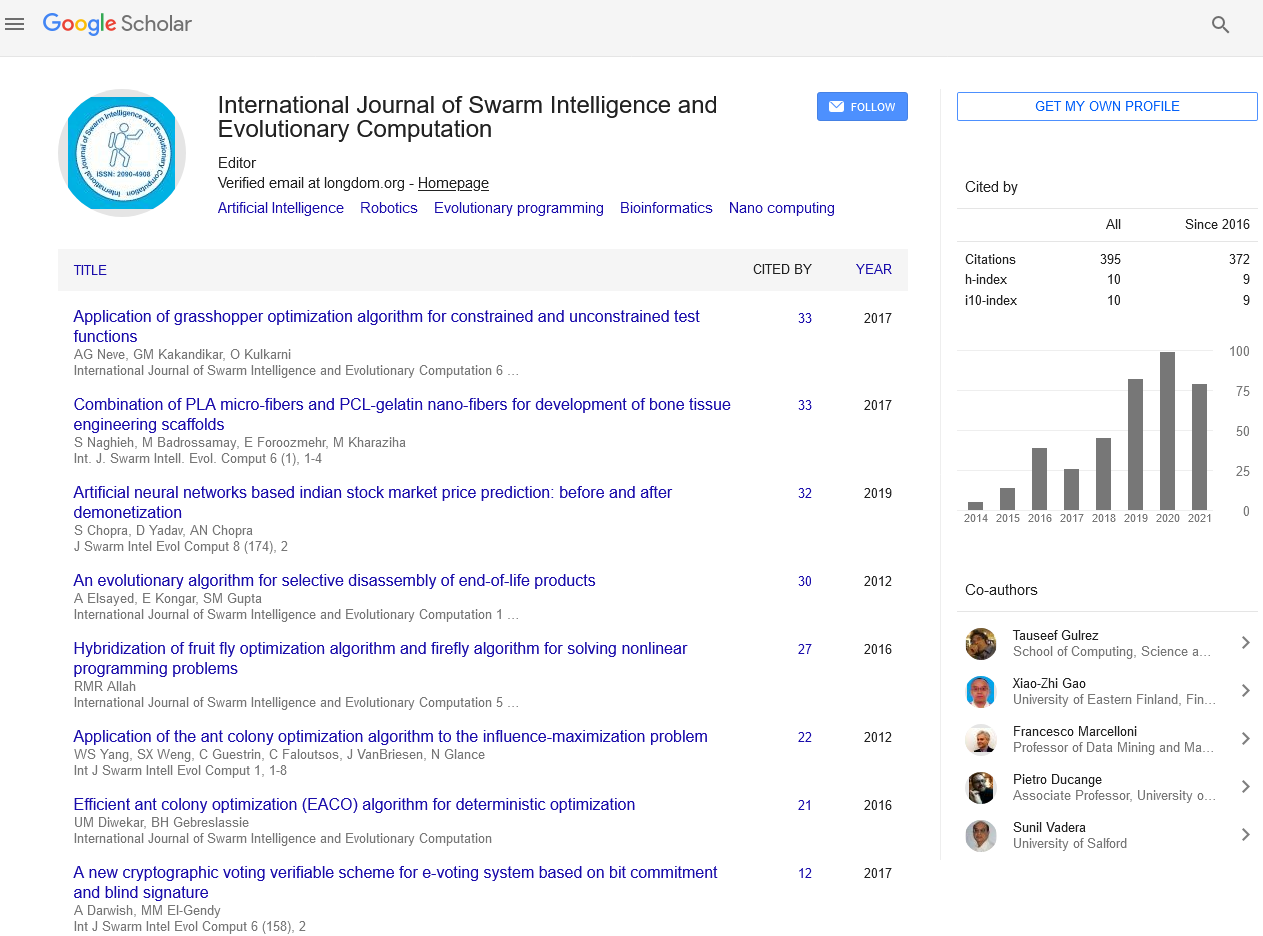Indexed In
- Genamics JournalSeek
- RefSeek
- Hamdard University
- EBSCO A-Z
- OCLC- WorldCat
- Publons
- Euro Pub
- Google Scholar
Useful Links
Share This Page
Journal Flyer

Open Access Journals
- Agri and Aquaculture
- Biochemistry
- Bioinformatics & Systems Biology
- Business & Management
- Chemistry
- Clinical Sciences
- Engineering
- Food & Nutrition
- General Science
- Genetics & Molecular Biology
- Immunology & Microbiology
- Medical Sciences
- Neuroscience & Psychology
- Nursing & Health Care
- Pharmaceutical Sciences
Perspective - (2022) Volume 11, Issue 9
Characteristics of Soft Computing and its Applications
Michael Carlos*Received: 17-Aug-2022, Manuscript No. SIEC-22-18416; Editor assigned: 19-Aug-2022, Pre QC No. SIEC-22-18416 (PQ); Reviewed: 05-Sep-2022, QC No. SIEC-22-18416; Revised: 13-Sep-2022, Manuscript No. SIEC-22-18416 (R); Published: 22-Sep-2022, DOI: 10.35248/2090-4908.22.11.275
Description
The use of approximation calculations to create imprecise but useable answers to complicated computer problems is known as soft computing. The approach allows for answers to issues that are either unsolvable or take too long to solve with existing hardware. Soft computing is also known as computational intelligence.
Soft computing is a method of problem solving that does not rely on machines. Soft computing, unlike traditional computing models, is tolerant of partial truths, ambiguity, imprecision, and approximation by using the human mind as a model. Soft computing's tolerance allows academics to approach challenges that standard computing cannot process.
Soft Computing Techniques
Artificial neural network
It is a parallel distributed network using connectionist modeling. ANN (Artificial Neural Network) and BNN (Biological Neural Network) are the two varieties. A unit is a neural network that processes a single element. The unit's components are input, weight, processing element, and output. It is analogous to our own neurological system. The key advantage is that they handle issues in parallel; artificial neural networks interact through electrical signals. The biggest problem is that they are not faulttolerant, which means that if one of the artificial neurons is damaged, it will no longer work.
Machine learning
Machine learning (ML) is an Artificial Intelligence (AI) field that creates machines that learn and improve from experience without the need for human intervention or programming. Machines are fed massive amounts of data, which they evaluate for patterns and use as examples to learn. They make decisions and alter behaviors automatically over time.
Expert systems
An expert system is a computer or application that, like a human expert in a specific topic, delivers answers, solves complex issues, and makes choices. It is regarded as the first successful AI model since it conducts sophisticated computations, analysis, and forecasts.
Genetic algorithm
The evolutionary algorithm can tackle NP-Hard problems, which are problems that cannot be solved in real time. The genetic algorithm can readily solve complicated issues that cannot be handled mathematically. It is a heuristic search or randomised search approach that gives an initial set of solutions and generates an efficient and effective solution to the problem.
Applications
Handwriting recognition
One of the most difficult areas of research for those working in the field of automatic pattern recognition and classification is machine recognition of handwritten text. The automatic recognition of handwritten text is an issue worth solving because a solution would allow us to develop and employ a more convenient and adaptable human-machine communication interface.
Decision support system
Soft computing approaches offer a collection of procedures for intending resistance to deceit, defect, partial truth for traceability and ambiguity, minimal setup cost, and strength. There are several ways for predicting software process faults. To construct the failure prediction model, SC applications such as Artificial Neural Network (ANN), Fuzzy Inference System (FIS), and adaptive neuro-FIS are employed.
Fuzzy logic control
The automatic optimal design of a fuzzy controller for an induction motor drive with vector control based on two separate soft-computing techniques: one based on a genetic learning approach and the other on an adaptive network-based fuzzy inference system algorithm. These strategies use an automatic tuning strategy to select the best parameter values and structures for the fuzzy controller.
Citation: Carlos M (2022) Characteristics of Soft Computing and its Applications. Int J Swarm Evol Comput. 11:275.
Copyright: © 2022 Carlos M. This is an open-access article distributed under the terms of the Creative Commons Attribution License, which permits unrestricted use, distribution, and reproduction in any medium, provided the original author and source are credited.


